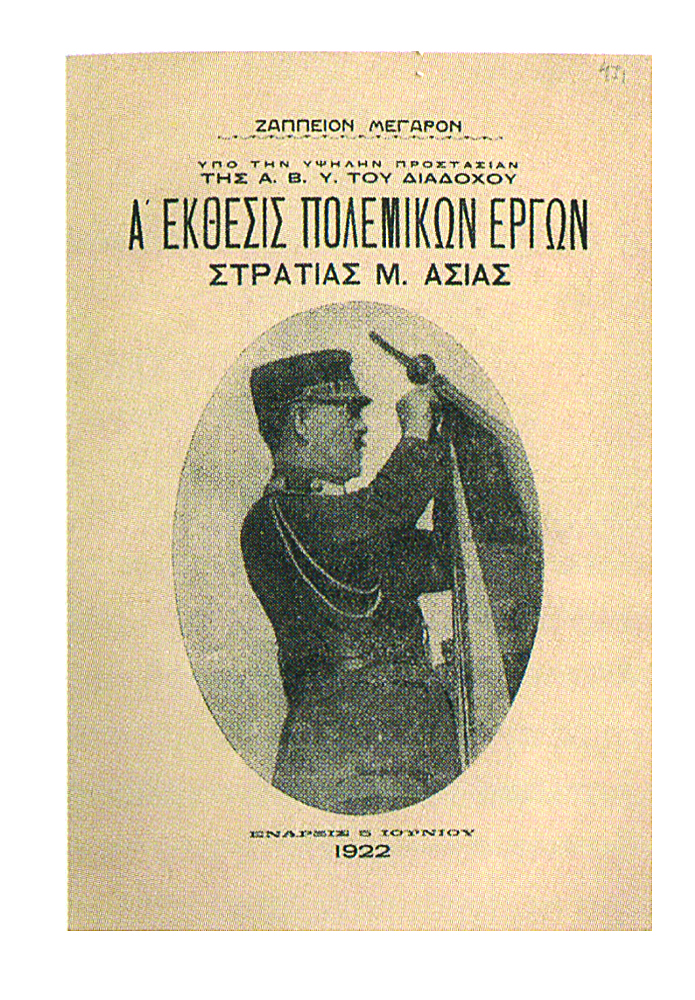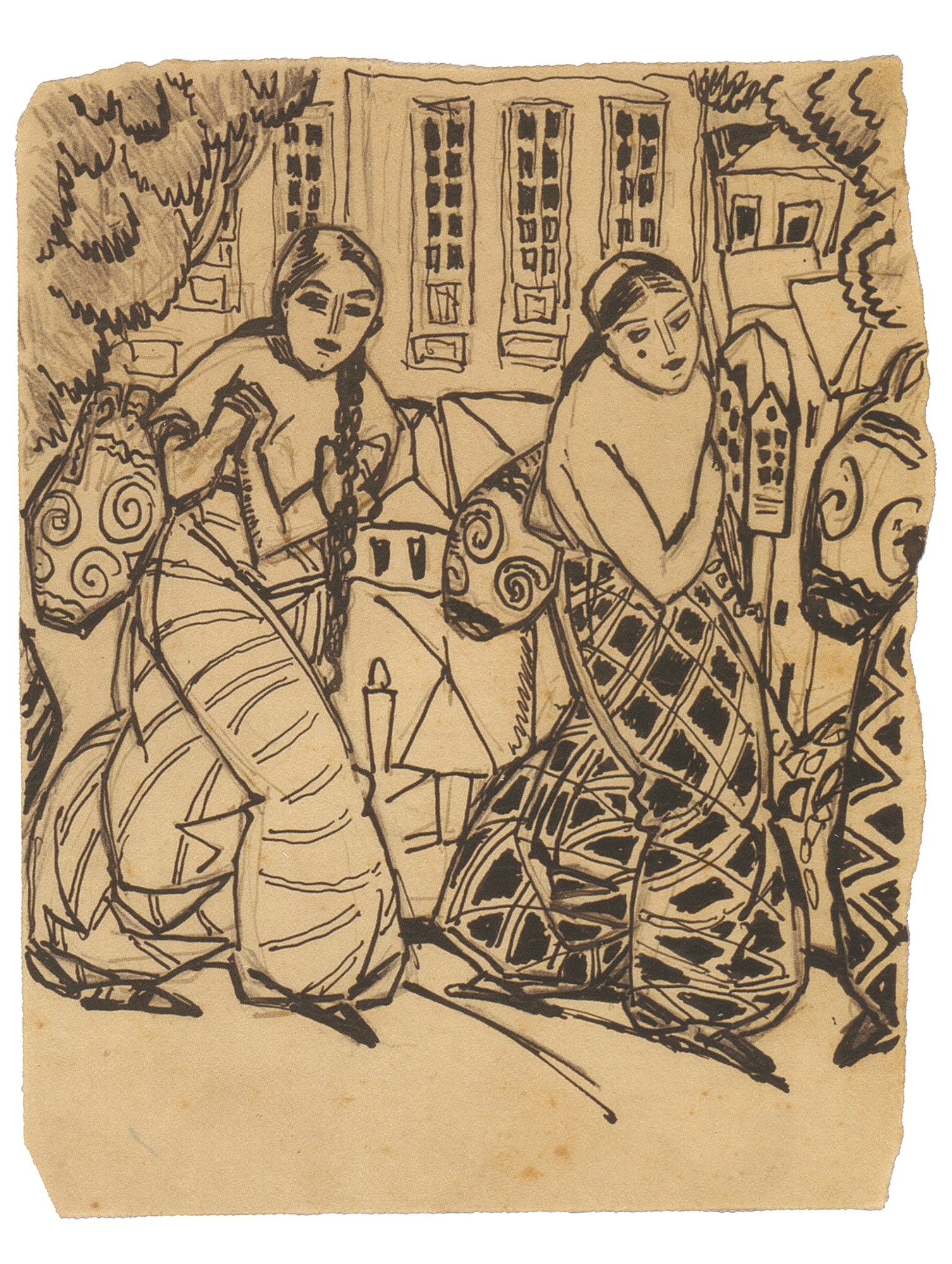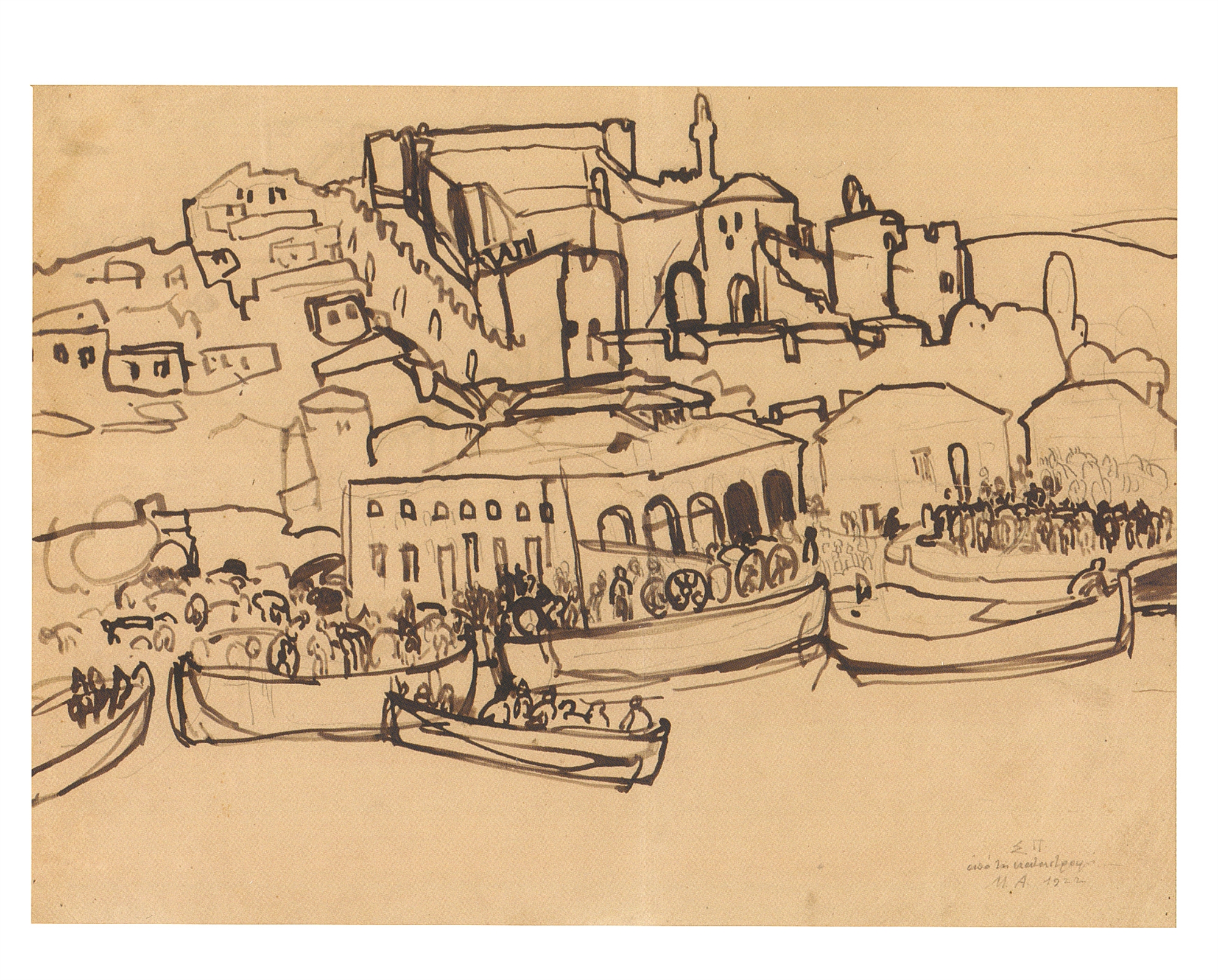A national tragedy, an artist’s loss
Exhibition on Asia Minor Catastrophe includes some of the few pieces by Spyros Papaloukas that survived the inferno of 1922

“The loss of his work in Asia Minor is something he mourned deeply,” the curator of the Teloglion Fine Arts Foundation’s collection, Christina Tsangalia, tells Kathimerini, referring to a traumatizing chapter in the life and career of esteemed Greek artist Spyros Papaloukas (1892-57). Yet this personal tragedy, the loss of the greatest part of a body of exceptional work depicting his experiences in Asia Minor, was part of a much bigger, national tragedy that was the destruction of Smyrna and the expulsion of the Greeks of Asia Minor.
About a year earlier, in 1921 and while he was studying art in Paris, Papaloukas decided to interrupt his scholarship program and join the army, according to his close friend and portrait subject Stratis Doukas. It was around that time too that Greece’s Ministry of Military Affairs had decided to send artists to the front so they could record efforts on the ground. Three artists, all in their 30s, were chosen to go that year, Pavlos Rodokanakis, Perikles Vyzantios and Papaloukas. They were shipped off east to observe life on the front and to create work that would help boost morale back home.
 An exhibition of that work was arranged at Zappeion Hall in Athens in June 1922 and was the first of its kind. The press raved about the work, and especially that of Papaloukas, while the show was also very well received by the public, as attested by an article in the newspaper Efimeris Valkanion. Nevertheless, the exhibition only had a brief run and was taken down soon after its inauguration, possibly because of some kind of disagreement between the Ministry of Military Affairs and the armed forces, as indicated in the excellent catalogue that accompanied the Teloglion’s 2012 exhibition on Papaloukas. It was, however, decided to take the exhibition to Smyrna to boost morale among the Greeks there, and that the three artists should go with it.
An exhibition of that work was arranged at Zappeion Hall in Athens in June 1922 and was the first of its kind. The press raved about the work, and especially that of Papaloukas, while the show was also very well received by the public, as attested by an article in the newspaper Efimeris Valkanion. Nevertheless, the exhibition only had a brief run and was taken down soon after its inauguration, possibly because of some kind of disagreement between the Ministry of Military Affairs and the armed forces, as indicated in the excellent catalogue that accompanied the Teloglion’s 2012 exhibition on Papaloukas. It was, however, decided to take the exhibition to Smyrna to boost morale among the Greeks there, and that the three artists should go with it.
As the horror unfolded and thousands fled the inferno, the artist’s drawings also went up in smoke
In the meantime, the Asia Minor front was collapsing fast. The Turkish Army occupied Smyrna on September 9 (under the new calendar) and the big fire that ensued burned through the city for four whole days. Papaloukas recorded the destruction around him with pencil and ink on paper: smoke rising above the rooftops, the port teeming with people looking for escape, the boats overflowing with women and children trying to reach the ships in the harbor. As the horror unfolded and thousands fled the inferno, the artist’s drawings also went up in smoke. No one knows exactly how many pieces were lost. Papaloukas later told Efimeris Valkanion that around 500 pieces had been destroyed, or about half the number he created during his stint with the military.
 Yet some work from that period of Papaloukas’ career has survived: a few watercolors that had not, perhaps, been selected for the exhibition, and several drawings that were probably sketches for later work. But even these scant samples show the magnitude of the artist, explains the former director of the National Gallery of Athens, Mary Michailidou, who took an especial interest in the subject.
Yet some work from that period of Papaloukas’ career has survived: a few watercolors that had not, perhaps, been selected for the exhibition, and several drawings that were probably sketches for later work. But even these scant samples show the magnitude of the artist, explains the former director of the National Gallery of Athens, Mary Michailidou, who took an especial interest in the subject.
“The surviving pieces show the quality of his work and are associated with the artist’s temperament and character,” says Michailidou. “Papaloukas followed the army, and all the light he found in Anatolia dissolved the color from his paintings, something that is very evident in his watercolors of Asia Minor’s landscapes. Because he was excellent at drawing, though, his sketches convey not just life on the battlefield or mementoes of the troops, but also scenes from the daily lives of people who crossed his path, and he came to love.”
His surviving work belongs mainly to private collections, but also a few public ones, and some pieces will be included in the exhibition “Asia Minor Hellenism: Heyday – Catastrophe – Displacement – Rebirth,” put together by the Benaki Museum (benaki.org) and the Center for Asia Minor Studies, that opens at the Benaki’s 138 Pireos Street annex on Thursday, September 15.
These are pieces that are of equal artistic and historical merit; they form a rare record of events on the ground during those turbulent times, and are a fine example of elemental expressionism, drawings done on the move, in bold strokes and with stylized figures reminiscent of Emile Bernard.

The artist’s return to Greece from Smyrna was marred by pettiness, Michailidou notes in the catalogue of an exhibition on Papaloukas held at the Teloglion in 2012. He also lost his scholarship in Paris, which further prompted his decision to settle in Greece, where he started mixing with avant-garde artists and intellectuals, then went on to spend time on the island of Aegina, where he created one of his most famous series, and later traveled to the monastic community of Mount Athos with Stratis Doukas. It was a visit that played a catalytic role in Papaloukas’ work, as studying Byzantine art and hagiography heralded a new phase in his career.
The Aegina and Mount Athos collections were shown in his first solo show, which was hosted at the cafe of the White Tower in Thessaloniki, signaling a new era in the northern port city’s art scene.





